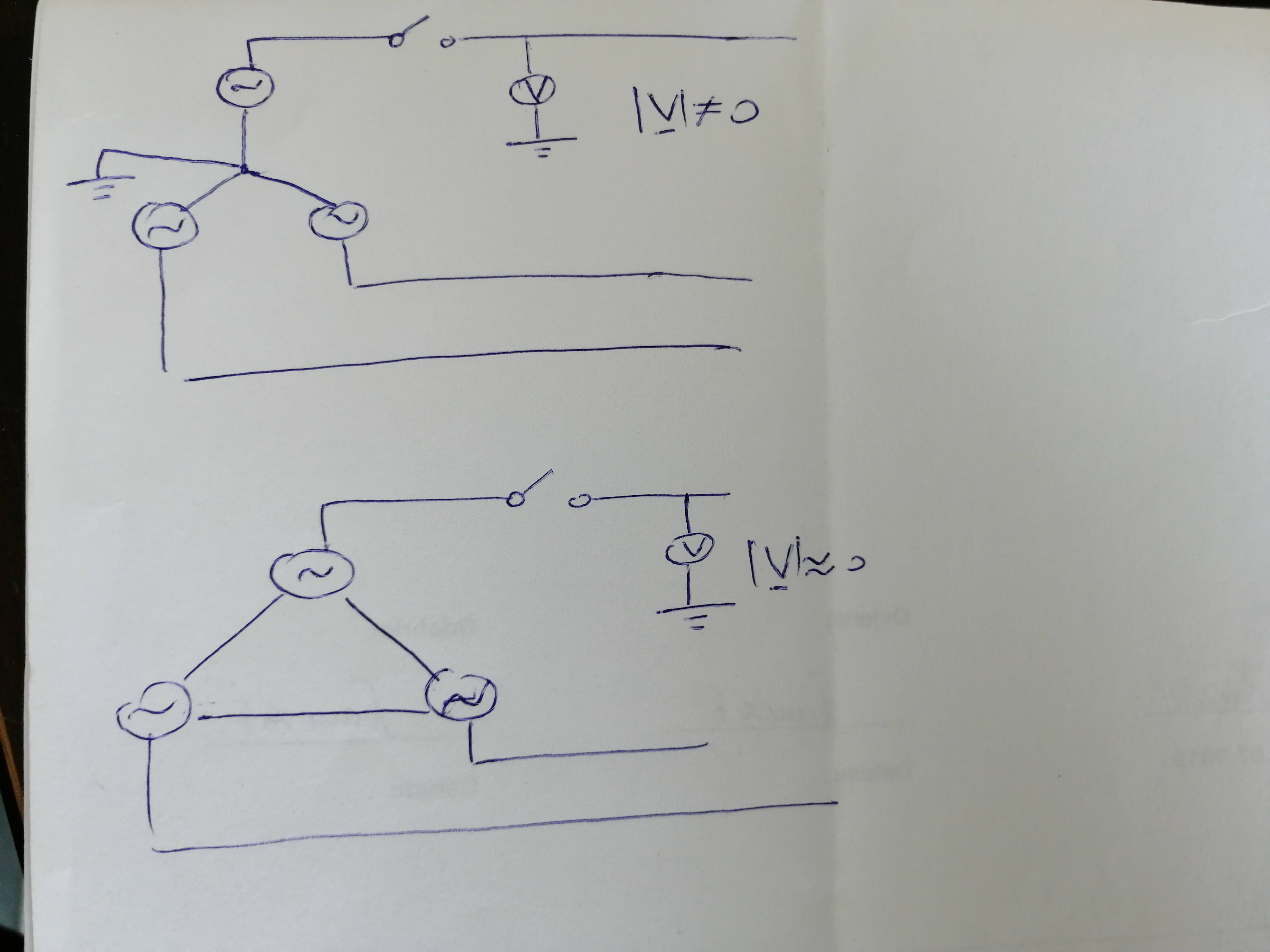Consider an overhead transmission line (not cable) and from whatever reason, one phase is out. Now, if secondary side of transformer at the beginning of transmission line is grounded star, there will be some not negligible voltage in the phase that is out (potential difference between line and ground). On the other hand, if secondary side of transformer is delta, voltage of phase that is out will be zero. Why is that happening? Type of load doesn't matter, it is not affecting this results. These are voltmeters connected to ground
Type of load doesn't matter, it is not affecting this results. These are voltmeters connected to ground
-
\$\begingroup\$ The coupling is different \$\endgroup\$– D.A.S.Commented Sep 25, 2019 at 22:52
-
\$\begingroup\$ zero compared to what? \$\endgroup\$– Bruce AbbottCommented Sep 25, 2019 at 23:20
-
1\$\begingroup\$ Draw a circuit and show us exactly what you’re asking. \$\endgroup\$– relayman357Commented Sep 26, 2019 at 3:05
-
\$\begingroup\$ What voltage are you measuring? How does it compare (magnitude and phase) to the source phase-ground voltages? \$\endgroup\$– relayman357Commented Sep 26, 2019 at 13:14
-
\$\begingroup\$ Your wye-grounded source provides zero sequence while the delta does not. My first thought here is simply backfeed through your tap load transformer connections. Get copy of "Impact of Distribution Transformer Connections on Feeder Protection Issues" by David R. Smith. It was presented at Texas A&M protective relay conference in 1994 (March 21-23). I'll post a snip in an answer. \$\endgroup\$– relayman357Commented Sep 26, 2019 at 13:33
1 Answer
The delta transformer is galvanically isolated from ground. If both connected phases are neither connected to ground (e.g. via incorrect installation or defective device etc.), there is no potential difference between the disconnected phase and ground - even with the phase connected, there is no potential difference - in other words, the ground is not involved at all in this circuit, unless there are no other unshown elements with connections to ground.
In the other case with the grounded star, any unshown device that is connected to one of the 2 or both uninterrupted phases and the interrupted phase could produce dangerous voltages at the "disconnected" phase.
That is why e.g. in Europe the power transmission lines are switched off alltogether (all 3 phases), even if there is a problem with 1 phase only , i.e short, undervoltage, load limit etc.
-
1\$\begingroup\$ There are no such things as ungrounded circuits in real life. You always have phase to ground parasitic capacitance. Further, you seem to have a faulty understanding of transmission lines. Single pole tripping and reclosing is common in Europe. His problem is in his modeling, it is not a real world case he is measuring. \$\endgroup\$ Commented Sep 29, 2019 at 14:55
